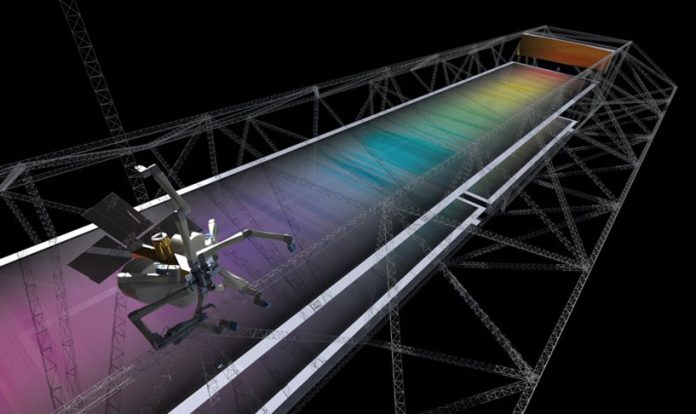Space.com reported Monday about a NASA funded concept, called SpiderFab, that promises to combine 3D printing techniques and the way spiders spin a web to build large scale structures in space. A company called Tethers Unlimited has received two rounds of funding from the space agency under the NASA Innovative Advanced Concepts (NIAC) program to develop the unique construction technique. Under a grant from NASA’s Small Business Innovation Research program, the company has already developed a machine that builds structural trusses using carbon fiber spools as raw material.
The big problem with building large scale structures in space, such as the International Space Station, is that they have to fit on top of a rocket and survive the stress of a launch from Earth. Then the pieces have to be manually fit together over a long period of time, dictated by the launch rate of the rockets. That is one reason the ISS took over ten years to build from the first module launched in 1998 to official completion in 2011.
Under the SpiderFab concept, a number of robots with carbon fiber raw material would be launched. The robots would spin out structures such as trusses and other objects in Earth orbit. Thus, large structures such as space telescopes and solar power satellites could be build “on site.” They would be larger and sturdier than similar structures that had to be launched from the ground and assembled.
The next step that Tethers Unlimited would like to take would be to launch a cubsat, a tiny version of its spider robot, to test the concept in low Earth orbit. A second, larger version of this “Makersat” would spin structures and then assemble them, perhaps a star shade that could be used for an exoplanet hunting telescope.
Eventually, the SpiderFab technique could be used to assemble structures using local materials, mined and refined from asteroids or the moon. If funding were made available, the technique could start building useful structures as early as the 2020s.















